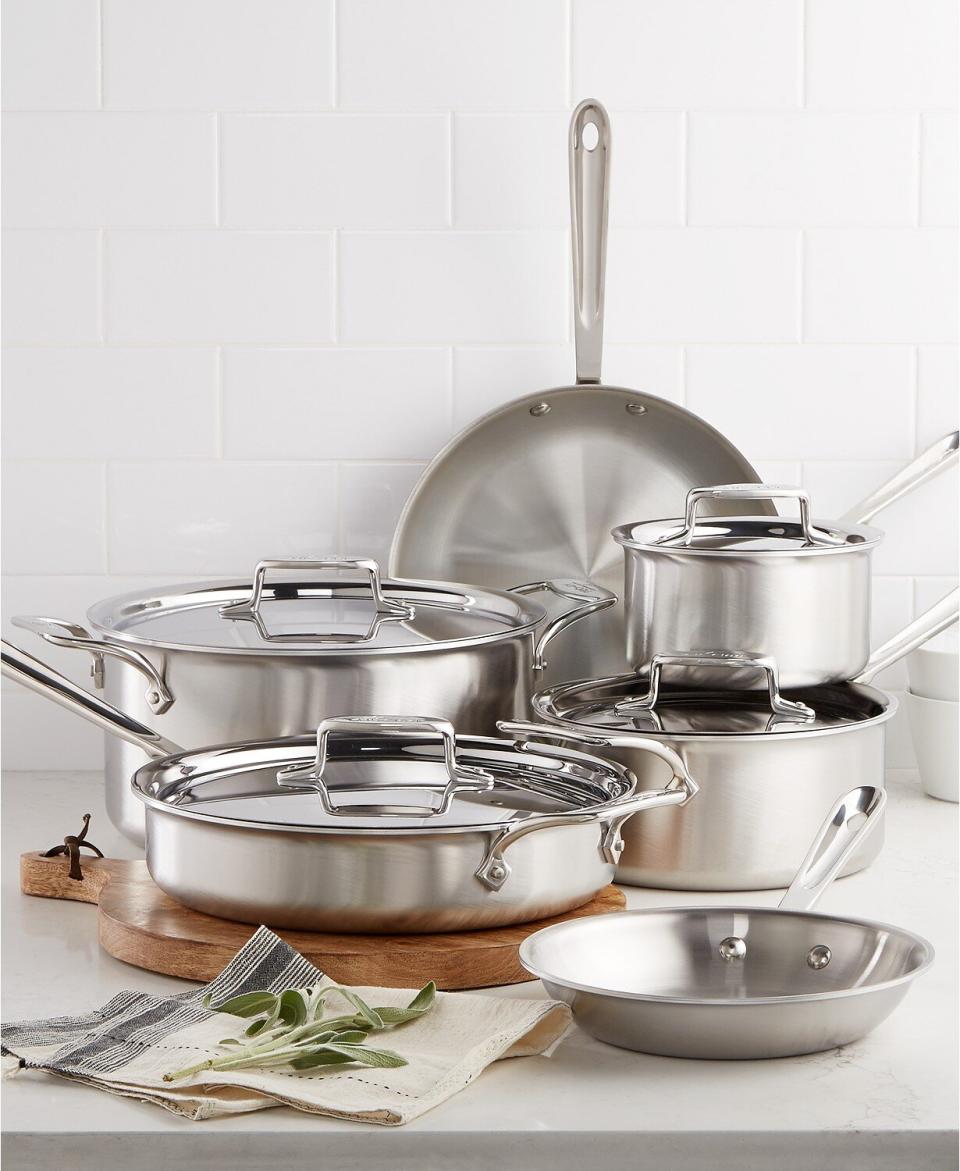How to Clean Stainless Steel
In addition to its shiny façade, stainless steel cookware can also be touted for its sturdiness, its ability to absorb heat quickly, and for how evenly it helps cook food. Stainless steel appliances are equally durable with their strong resistance to rust and water damage and their enduring shelf-life. But with beauty and functionality also comes the maintenance of keeping it looking nice and shiny (fingerprints, be gone). Conventional wisdom holds that pots and pans should be given a deep cleaning, but every metal has different properties and requires special care. Linda Mason Hunter, the author of GREEN CLEAN: The Environmentally Sound Guide to Cleaning Your Home ($13.85, amazon.com), provides several techniques for cleaning various stainless steel items, including pans, cutlery, and appliances. "Cleaning stainless steel isn't hard, in my experience, and worth it because the material is so good for so many things," she says.

Before getting started, it's important to note that regardless of which technique you choose, you never want to soak stainless steel cookware. "This results in pitted surfaces," says Mason Hunter, adding, "Avoid using harsh abrasives, scouring powders, steel wool, bleach, and ammonia, all of which can damage the finish." Here's her best advice for getting the job done.
Related: How to Choose Between Stainless Steel, Nonstick, and Cast Iron Cookware
Gather Your Supplies
Mason Hunter recommends two techniques for cleaning stainless steel: One that involves using an eco-friendly commercial product and a second DIY method using common household ingredients. No matter which method you choose, she notes that it's important to use a soft towel and not microfiber, "which is made of plastic and is very very very hard on the environment," and encourages you to "make sure to dry each stainless steel item to prevent a film from forming."
Sparkle and Shine
If you're looking for an eco-friendly commercial product to use, try Shaklee Basic H2 ($19.99, amazon.com). When cleaning kitchen appliances, such as a refrigerator or stove, use a mix of one teaspoon Shaklee Basic H2 to two cups of water.
For a DIY eco-friendly alternative try using a combination of olive oil, white vinegar, and baking soda. "Remove smudges with one tablespoon of olive oil and one tablespoon white vinegar," Mason Hunter suggests. Drizzle olive oil onto the rag and rub the surface to get rid of smudges. Then, add a bit of white vinegar to the other side of the rag, wipe the surface and let dry.
Remove Food and Grease
"To remove baked-on food and grease on pots and pans, clean well every time you use them with a paste of baking soda and warm water," advises Mason Hunter. "Gently rub onto the surface using a soft cloth or sponge. Wipe with a clean wet cloth and towel dry."
Quick Clean
"I put my stainless steel cutlery in the dishwasher, no problem," says Mason Hunter. However, she recommends hand-washing-with hot, soapy water-anything precious or expensive, or if you're simply looking for a quick clean.
Scratches and Stains
For scratches and stains on stainless steel products, you can use a stainless steel cleaner or apply white vinegar with a soft cloth and rub. "Always dry thoroughly after washing to prevent a film from forming," notes Mason Hunter.

